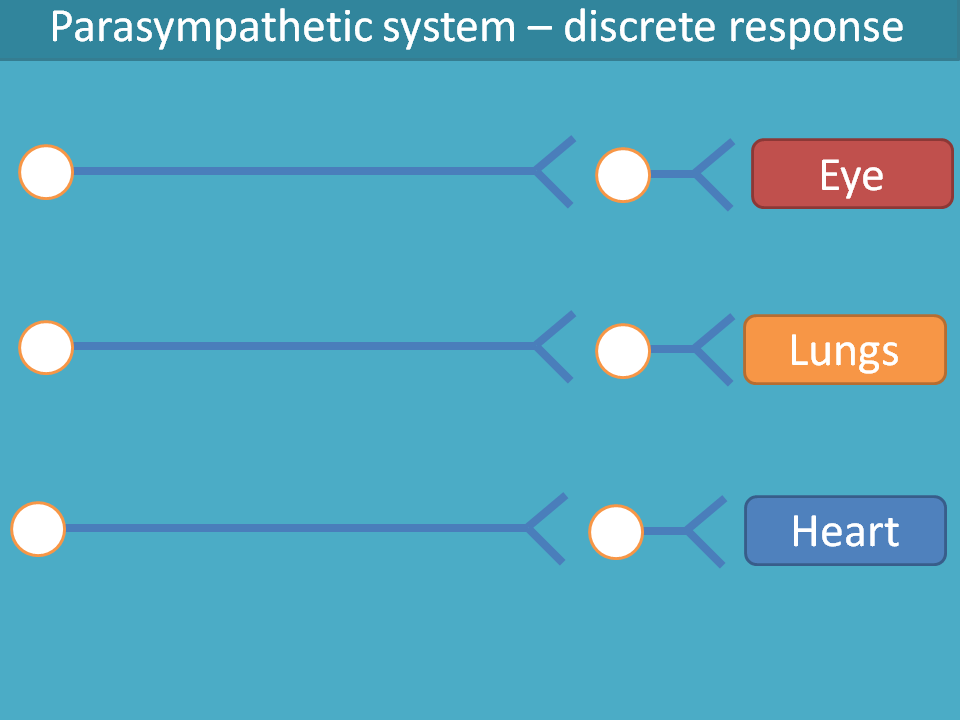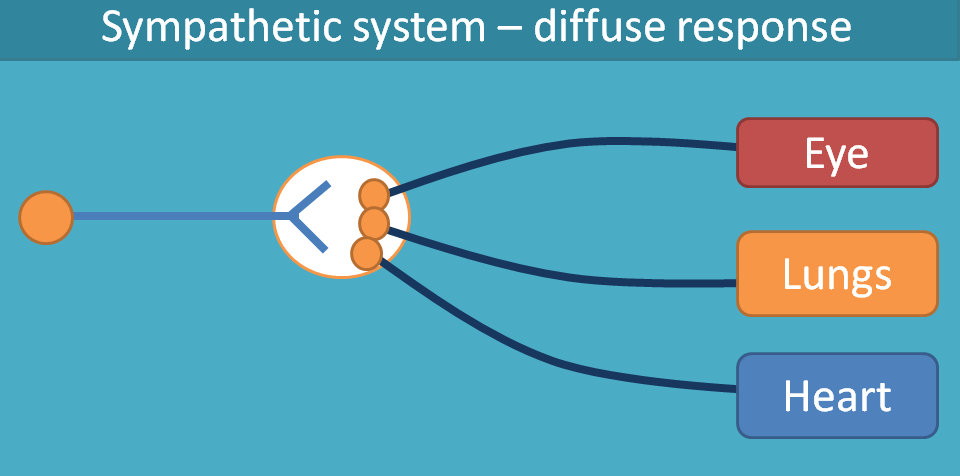Autonomic nervous system - Anatomy
Already we have discussed that ANS consists of mainly three divisions viz. parasympathetic, sympathetic and enteric nervous systems.
But you may found many times that ANS being divided mainly into two divisions such as parasympathetic and sympathetic.
Why enteric nervous system not considered in ANS?
Two points can answer and justify the above question.
- Homeostasis at many organs is a combined effort of sympathetic and parasympathetic systems where enteric system has no role.
- Enteric nervous system is more complex in nature as it is not only controlled by ANS but also by other local mediators and local hormones.
For example, parasympathetic system increases gastric acid secretion fro gastric parietal cells. But other mediators also work at this place. Gastrin is an endocrine hormone released from blood and histamine released from mast cells as a local hormone all increase gastric acid secretion. So this function is complex controlled by various mediators.
Similarly gastric motility is not only controlled by sympathetic and parasympathetic system, but also by other mediators like dopamine and 5-HT. Few of the local mediators like histamine can also modulate motility.
Further enteric nervous system is still more complex due to interneurons forming neural plexus all doesn't fit well to describe this system simply with ANS hence not discussed here.
Therefore two main components of the ANS working to maintain homeostasis are
- Parasympathetic system
- Sympathetic system
Let’s go in detail about these two systems.
Two neuron arrangement
Let’s recall one point that ANS exhibits two neuron arrangement with a ganglia in between two neurons.
But we can also found exception at these locations where single neuron is involved.
- Adrenal medulla
- Skeletal muscle
Sympathetic nerve fibers supplying to adrenal medulla are single motor neurons with no ganglia. These fibers end at adrenal medulla and release acetylcholine as neurotransmitter. This acetylcholine then act on nicotinic acetylcholine receptors(nAChR) and activates adrenal medulla to release adrenaline and norepinephrine.
Somatic system, even it is a voluntary nervous system, controlled by ANS. It is also supplied by single neuron with acetylcholine as mediator. The released acetylcholine again acts on nicotinic acetylcholine receptors(nAChR) to produces skeletal muscle contraction.
Parasympathetic vs sympathetic
Parasympathetic fibers maintain one to one relationship between preganlionic and postganglionic fibers. In another words, for every preganglionic neuron there is a postganglionic neuron supplying to a specific organ. For example, preganglionic neuron coming along with vagus nerve connects with a postganglionic fiber specific to heart.

That's why if a specific parasympathetic neuron is stimulated, it activates only one specific target organ supplied by those neurons. Hence it shows discrete response.
The situation is different in case of sympathetic fibers. They show one to many relationship so that at ganglia many number of postganglionic fibers are associated.

So if one preganglionic neuron is activated, all postganglionic fibers associated with it are activated producing diffuse response.
In the next section, let’s have more details of parasympathetic and sympathetic systems.